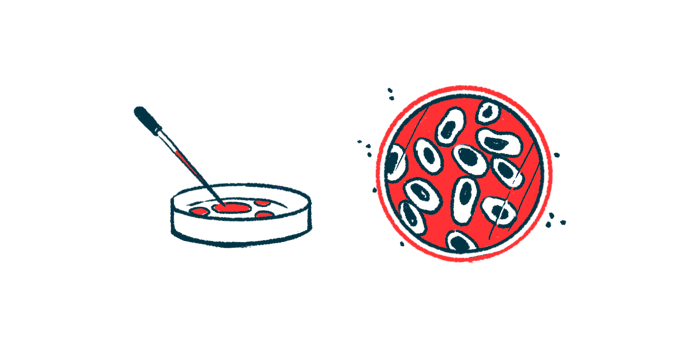Trikafta may ease inflammation, tissue damage in patients’ lungs
Cell study looks into modulator therapy's likely effects beyond CFTR protein
Written by |

The cystic fibrosis (CF) treatment Trikafta leads to changes in airway cell gene expression, or activity, that may help fend off bacterial infections and lessen lung damage, researchers report.
“This study identifies mechanisms through which ETI [Trikafta] is likely to improve antibacterial function, reduce lung damage, and reduce proinflammatory signaling,” the scientists wrote in the study, “Gene expression responses of CF airway epithelial cells exposed to elexacaftor/tezacaftor/ivacaftor (ETI) suggest benefits beyond improved CFTR channel function.” It was published in the American Journal of Physiology-Lung Cellular and Molecular Physiology.
CF is caused by mutations in the gene CFTR, which provides instructions to make the CFTR protein. This protein normally helps to regulate the flow of water and chloride in and out of cells. With CF, the defective or absent protein leads the body to make unusually thick and sticky mucus that builds in organs and drives most disease symptoms. Thick mucus in the lungs provides a fertile breeding ground for bacteria, and recurrent lung infections are a common issue for CF patients.
Trikafta’s known mechanism of action centers on the CFTR protein
Trikafta contains a combination of three CFTR modulators — ivacaftor, tezacaftor, and elexacaftor — that can boost the functionality of the defective protein in people with specific CFTR mutations. Increasing the protein’s function allows more normal mucus production.
There’s some evidence, however, that Trikafta may exert effects in the lungs beyond its impact on the CFTR protein. To further explore this possibility, a team of U.S. scientists conducted tests to see how Trikafta impacts the gene expression of lung epithelial cells, which are the cells that line the airways in the lungs. Gene expression refers to the extent that individual genes are turned off or on within cells.
For their experiments, the researchers used airway cells from five people with CF carrying the most common disease-causing mutation, called F508del. As expected, Trikafta increased CFTR function in these cells.
Results indicated that Trkafta led to an increase in the activity of DEFB1, a gene that lung cells use to help fight off bacterial infections. The scientists noted that these findings may help to explain reports of Trikafta reducing the burden of problematic lung bacteria in CF patients.
Potential seen to lessen lung damage, activity of stress response gene
Trikafta also reduced the activity of the genes MMP10 and MMP12. These genes encode proteins that can weaken or destroy the molecular scaffolds that hold cells in place, helping them to move and grow. In CF patients, this family of proteins has been associated with irreversible lung damage. As such, reduced expression of these genes implies that Trikafta may help lessen physical damage to lung tissue.
Additionally, the combination therapy reduced the activity of HMOX1, a gene that’s turned on when cells are responding to stress. As HMOX1 activity is known to be reduced in CF, the scientists wrote, “decreased HMOX1 gene expression in CF [airway epithelial cells] following [Trikafta] suggests that [Trikafta] might compromise an anti-bacterial and anti-inflammatory state that is already deficient in CF.”
Results also showed that Trikafta lowered the levels of proinflammatory proteins, which could lessen the recruitment of immune cells and, thereby, reduce lung damage.
Collectively, these data support the idea that Trikafta’s effects on lung health may extend beyond its effect on the CFTR protein, the researchers concluded.
Vertex Pharmaceuticals, the company that sells Trikafta, was not involved with this research.







